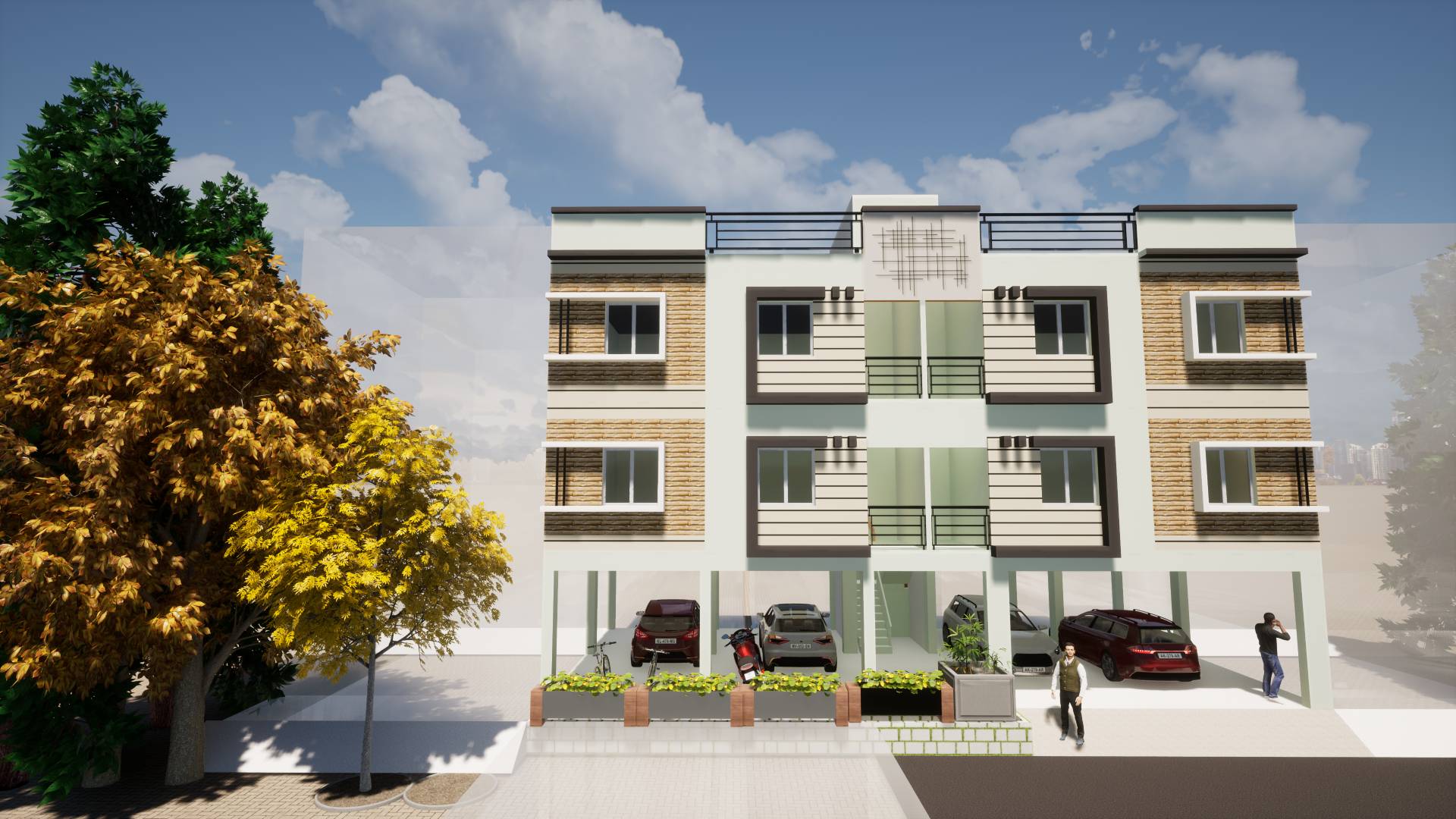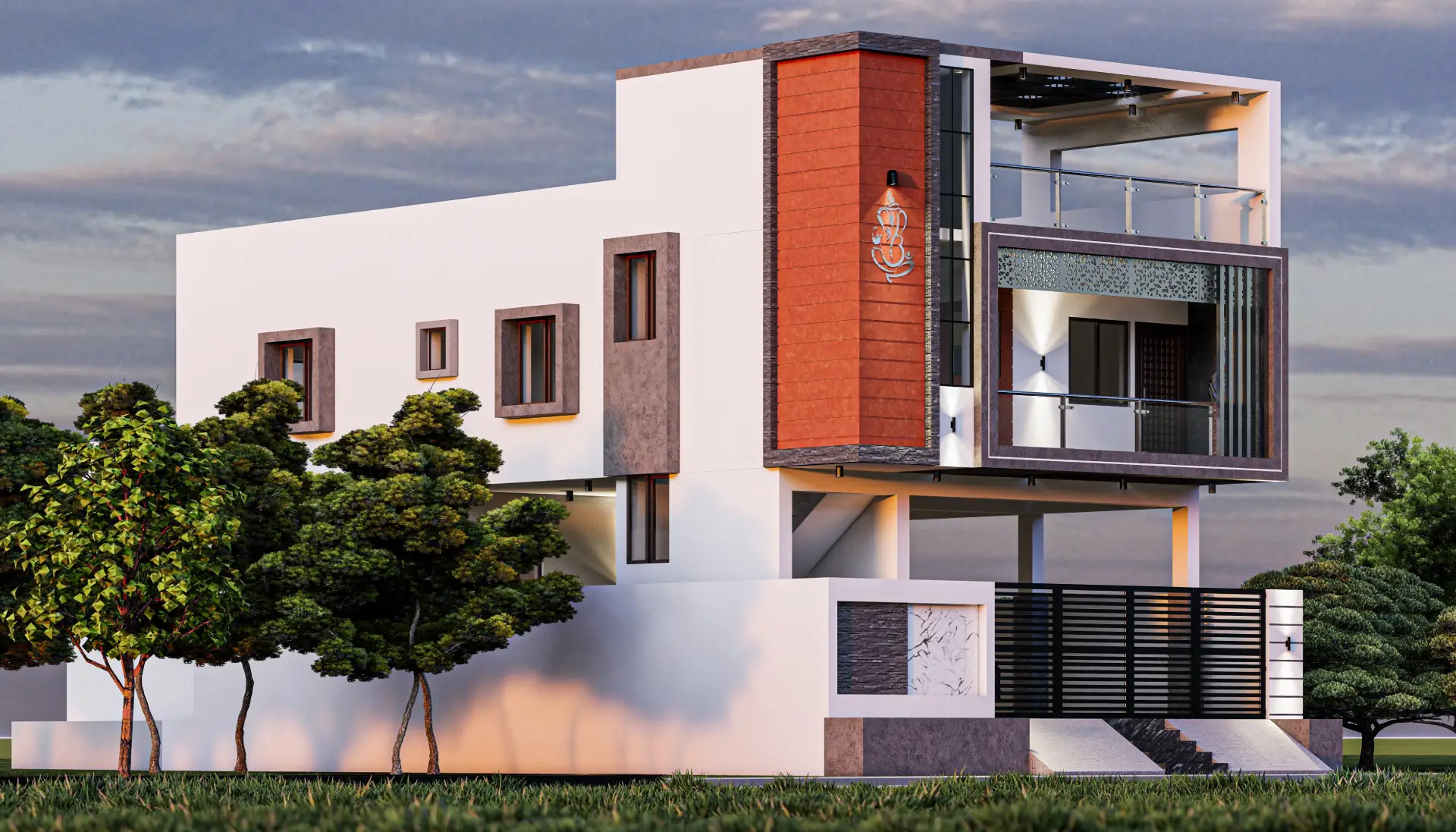
East Facing House Vastu Plans: A Comprehensive Guide for a Harmonious Home
When building or buying a home, the layout and orientation hold immense significance in Indian culture, particularly in accordance with Vastu Shastra. For centuries, Vastu Shastra has guided homeowners to design spaces that align with natural energies, ensuring prosperity, harmony, and happiness. Among various orientations, east-facing houses are considered especially auspicious as they welcome the morning sun, a source of positive energy.
If you’re planning to build your dream home, understanding the principles of Vastu is crucial. In this guide, we’ll explore everything about East Facing House Vastu Plans, helping you design a space that’s not only functional but also filled with positivity.
Understanding East-Facing Houses
What is an East-Facing House?
An east-facing house is one where the main entrance or façade faces the east direction. This orientation is significant because the sun rises in the east, bringing light, energy, and vitality into the home.
Significance in Vastu Shastra
Vastu Shastra emphasizes aligning homes with cosmic forces. East-facing houses symbolize growth, prosperity, and enlightenment, making them an ideal choice for families seeking holistic well-being.
Advantages of East-Facing Houses
1. Abundant Sunlight
East-facing homes allow ample sunlight to enter during the morning hours, which is not only energizing but also beneficial for health.
2. Connection with Nature
The east direction represents the element of air in Vastu. Aligning the house in this direction ensures a balance of natural energies.
3. Fosters Success
Homes that align with the east direction are believed to attract success, growth, and positive vibes, particularly for those in creative fields or leadership roles.
Key Principles of East-Facing House Vastu Plans
Designing an east-facing house requires adhering to specific Vastu principles to maximize its benefits:
1. Main Door Placement
The main entrance should ideally be in the middle or the northern half of the east-facing wall. Avoid placing the door in the southern half, as it may attract negative energy.
2. Balancing the Five Elements
Incorporate the five elements of nature—earth, water, fire, air, and space—into your layout to maintain harmony.
3. Direction for Key Rooms
Each room should be strategically positioned:
- Living room: North or northeast
- Kitchen: Southeast
- Master bedroom: Southwest
- Pooja room: Northeast

Vastu-Compliant Main Entrance for East-Facing Homes
The main door serves as the gateway for energy to enter the house. Here are some essential guidelines:
- Best Positions: Place the main door between the 3rd and 4th pada (step) of the east-facing wall. This ensures the inflow of positive energy.
- Avoiding Doshas: Avoid obstructions like poles, trees, or clutter directly in front of the door.
Room-Wise Vastu Guidelines
1. Living Room
- Position: North or northeast
- Décor: Use light-colored furniture and keep the space clutter-free for positive vibes.
2. Kitchen
- Location: Southeast corner
- Stove Placement: Ensure the stove faces east for the cook to face the rising sun.
3. Master Bedroom
- Location: Southwest for stability and restful sleep.
4. Pooja Room
- Ideal Spot: Northeast direction for spiritual energy and peace.
Read More: Which Is the Agni Moola of the Home? A Guide to Agni Corner Vastu Principles
Exterior Vastu Guidelines
1. Garden and Landscaping
- Positioning: Gardens should ideally be located in the northeast portion of the property to attract positivity and good energy.
- Plants: Avoid planting large trees directly in front of the main entrance, as they can obstruct the flow of energy.
- Water Features: If you’re considering adding a fountain or a small pond, ensure it’s placed in the northeast direction for prosperity.
2. Boundary Walls and Gates
- Height: The southern and western boundary walls should be taller than those in the north and east to maintain balance.
- Gate Positioning: Ensure the main gate aligns harmoniously with the main entrance. Preferably, it should face east or north.
3. Placement of Water Tanks
- Underground Tank: Best positioned in the northeast direction.
- Overhead Tank: Southwest is ideal but avoid the northeast, as it can create an imbalance in the home’s energy.
Common Vastu Doshas in East-Facing Houses and Remedies
While east-facing houses are generally auspicious, there can be some Vastu doshas (flaws) that affect the flow of energy. Here’s how to identify and rectify them:
1. Incorrect Main Door Placement
- Issue: If the door is placed in the southern half of the east wall, it can disrupt harmony.
- Remedy: Install a Vastu pyramid above the door or shift the door to the north-eastern part.
2. Kitchen in the Northeast
- Issue: A kitchen in the northeast can disturb the positive energy in the house.
- Remedy: Relocate the kitchen to the southeast or northwest. If relocation is not possible, place a Vastu crystal in the northeast.
3. Toilets in the Wrong Direction
- Issue: Toilets in the northeast or center of the house can lead to health and financial issues.
- Remedy: Use Vastu mirrors or energizers to counteract the negative impact.
Tips to Maximize Vastu Benefits in East-Facing Homes
1. Optimize Natural Light
Ensure your home receives plenty of sunlight, especially in the mornings. Large east-facing windows can help with this.
2. Ventilation
Proper ventilation helps circulate positive energy. Install windows and vents strategically to promote airflow.
3. Balancing Décor
Use light and calming colors in the northeast rooms, while earthy tones work best in the southwest areas. Incorporate natural elements like plants and water features to enhance energy flow.

East-Facing House Vastu Myths and Misconceptions
Myth 1: East-Facing Houses Are Perfect for Everyone
While east-facing homes are considered auspicious, their suitability depends on the resident’s profession, lifestyle, and preferences.
Myth 2: East Is the Only Auspicious Direction
Though east is significant, other directions like north or northwest can also be favorable when planned according to Vastu principles.
Myth 3: Following Vastu Eliminates All Problems
Vastu enhances harmony and balance but doesn’t guarantee a problem-free life. It’s a tool to complement your efforts toward a positive lifestyle.
Read More: Myths and facts on vastu
Modern Architectural Trends with Vastu Compliance
Integrating modern architectural designs with traditional Vastu principles is not only possible but also practical. Here’s how:
1. Open Floor Plans
Design spacious interiors with minimal walls, ensuring free flow of natural light and air.
2. Eco-Friendly Materials
Use sustainable materials like bamboo, wood, or stone to align with nature’s energy.
3. Smart Home Technology
Incorporate smart lighting and ventilation systems to enhance the energy flow while maintaining modern conveniences.
The Role of Bluemoon Construction in Designing East-Facing Homes
At Bluemoon Construction, we specialize in creating Vastu-compliant homes that seamlessly blend traditional wisdom with modern design. Our team ensures that every aspect of your house—from layout to décor—is aligned with Vastu principles, guaranteeing a harmonious living experience.
Why Choose Bluemoon Construction?
- Decades of experience in designing Vastu-compliant homes.
- Tailored solutions to match your unique preferences and budget.
- Expert guidance on rectifying Vastu doshas.
Case Studies of Successful East-Facing Vastu Designs
Project 1: Modern East-Facing Villa
- Client’s Requirement: A spacious, sunlight-filled home.
- Solution: We placed the main entrance in the northeast, designed a southeast kitchen, and ensured a lush garden in the northeast.
- Outcome: The family reported improved harmony and well-being.
Project 2: Compact East-Facing Apartment
- Challenge: Limited space in an urban setting.
- Solution: Strategic positioning of rooms and use of mirrors to enhance space and energy flow.
- Outcome: The client was delighted with the efficient and peaceful layout.
Common Mistakes to Avoid While Designing East-Facing Houses
1. Overlooking the Main Door Placement
Placing the door in the wrong section can disrupt the flow of positive energy.
2. Neglecting the Five Elements
Failing to balance the elements (fire, water, etc.) can lead to disharmony.
3. Ignoring Expert Advice
Vastu compliance requires expertise. Relying on DIY methods or generic plans may not yield the desired results.
Conclusion
An east-facing house, when designed in alignment with Vastu principles, can be a haven of positivity, health, and prosperity. By paying attention to the placement of rooms, the main entrance, and natural elements, you can create a home that fosters growth and harmony. With Bluemoon Construction, you’re not just building a house; you’re crafting a space that reflects balance, beauty, and bliss.
FAQs
1. What is an east-facing house in Vastu?
An east-facing house is one where the main door faces the east direction, welcoming the morning sun and positive energy.
2. Why is the east direction considered auspicious?
The east is associated with the rising sun, symbolizing new beginnings, energy, and growth in Vastu Shastra.
3. Can a west-facing house be converted into an east-facing one?
While structural changes are challenging, you can modify interiors and entrances to align with east-facing Vastu principles.
4. How can I ensure my east-facing house follows Vastu principles?
Consult Vastu experts like Bluemoon Construction to design or remodel your home for optimal Vastu compliance.
5. Why should I choose Bluemoon Construction for my home design?
Bluemoon Construction combines expertise in modern architecture and Vastu compliance, delivering tailored solutions for every client.



